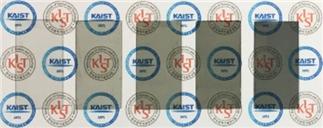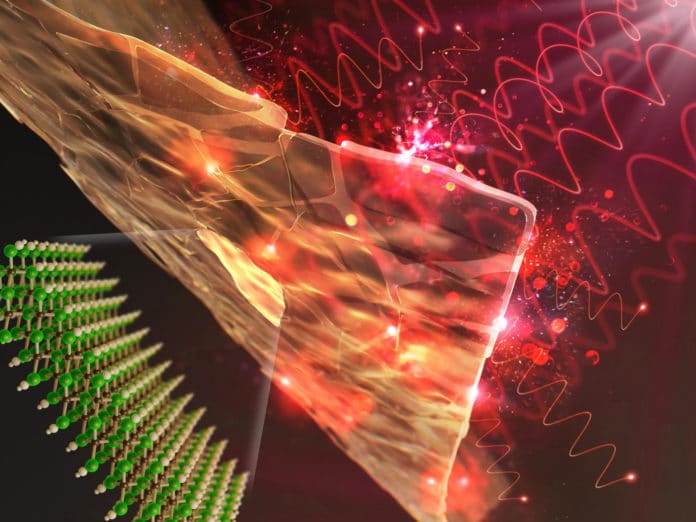Using a newly developed technology, Korean researchers were successfully able to design nanometer-thick electromagnetic shielding using MXene, a new two-dimensional nanomaterial for EMI shielding.
This new electromagnetic shielding material is 55 nm in thickness and provides 99% efficiency.
The research was jointly conducted with a team led by Professor Kim Sang-ouk of the Department of Materials Science and Engineering at Korea Advanced Institute of Science and Technology (KAIST, President: Shin Sung-Chul) and a research team led by Professor Yury Gogotsi from Drexel University, USA.
Researchers in this study used the self-assembly technique to fabricate an ultrathin MXene film with uniform atomic-scale thickness. MXene film has the same level of electrical conductivity (10,000 S/cm) as metals. Moreover, it has exceptional absolute electromagnetic shielding performance greater than that of any other material reported to date.

Researchers added a volatile solution onto the surface of a diluted MXene solution. This induced floating MXene flakes.
Due to differences in surface tension, Vertical convection occurred, which leads to the self-assembly of the micron-sized MXene flakes, thereby forming an ultrathin electromagnetic shielding film with uniform atomic-scale thickness.
According to researchers, the film can easily be transferred onto any substrate and layered multiple times for customized thickness, transmittance, and surface resistance.
Koo Chong-Min, the head of the Materials Architecturing Research Center at KIST, said, “We used a self-assembly technique to fabricate an ultrathin Ti3C2Tx MXene film with uniform atomic-scale thickness. This technology helped to examine the electromagnetic shielding mechanism of nanometer-thick 2D nanomaterials and to develop an ultrathin electromagnetic shielding application technology for flexible electronics.”
“We believe that the ultrathin coated MXene technology can be applied to various electronic devices and be used for mass production, thereby facilitating research on the application of next-generation lightweight electromagnetic shielding and flexible and printable electronics.”
Journal Reference:
- Electromagnetic Shielding of Monolayer MXene Assemblies. DOI: 10.1002/adma.201906769
